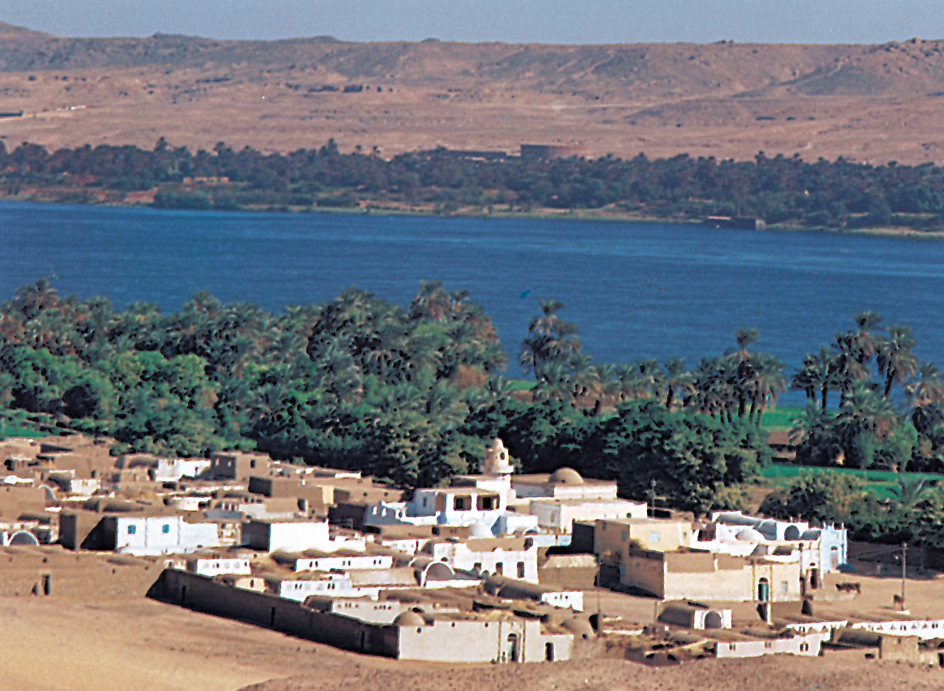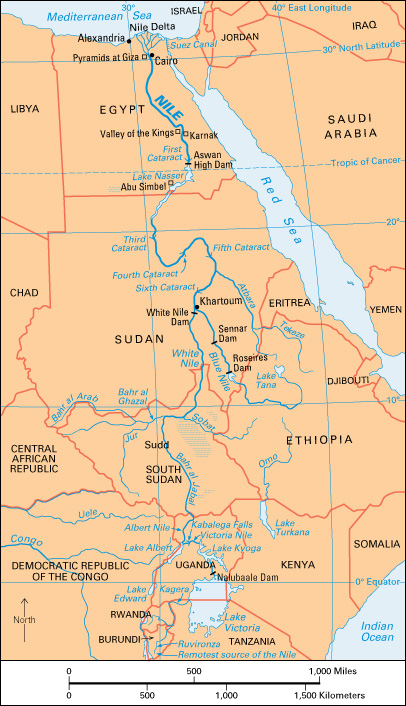Nile River is the longest river in the world. It flows for 4,160 miles (6,695 kilometers) through northeast Africa. The Nile rises near the equator and flows into the Mediterranean Sea. It irrigates about 6 million acres (2.4 million hectares) of land in Egypt and about 23/4 million acres (1.1 million hectares) in Sudan. For much of Egypt and Sudan, the Nile is the sole source of water. 
The Nile Valley and the Nile Delta rank among the world’s most fertile farming areas. Until 1968, water from the Nile deposited fertile silt (particles of soil) in the valley and on the delta where the Nile flows into the Mediterranean. The Nile also flooded certain areas every summer. In 1968, the Aswan High Dam in southeastern Egypt began operating. This dam ended the annual floods and trapped the Nile’s silt behind the dam in Lake Nasser. Without regular deposits of silt, Egyptian farmers must use more artificial fertilizers on their soil. But the high dam and other dams generate electric power and provide a steady flow of water for irrigation.
The course of the Nile.
The Nile flows generally northward. Its southernmost source is the Ruvironza River in Burundi. Its largest source is Lake Victoria. The Nile flows through the enormous swamps of the Sudd region in South Sudan, where high temperatures cause about half of the water to evaporate. North of Cairo, Egypt, the Nile divides into the Rosetta and Damietta branches and enters the Nile Delta. The delta has highly fertile soil, as well as swamps and salt lakes.

The White Nile from Burundi joins the Blue Nile from Ethiopia at Khartoum, Sudan. The Atbara River, another source of the Nile, drains into it in Sudan north of Khartoum. The White Nile is longer than the Blue Nile, but about 70 percent of the Nile’s water comes from the Blue Nile.
The Nile Valley and Nile Delta
make up about 3 percent of Egypt’s total area. Almost all Egyptian farms lie in this densely populated region. Water from the Nile enables farmers in the valley and delta to raise various crops year-round. These crops include clover, wheat, and beans in the winter, and cotton, corn, rice, and millet in the summer. Cotton is Egypt’s most important financial crop.
